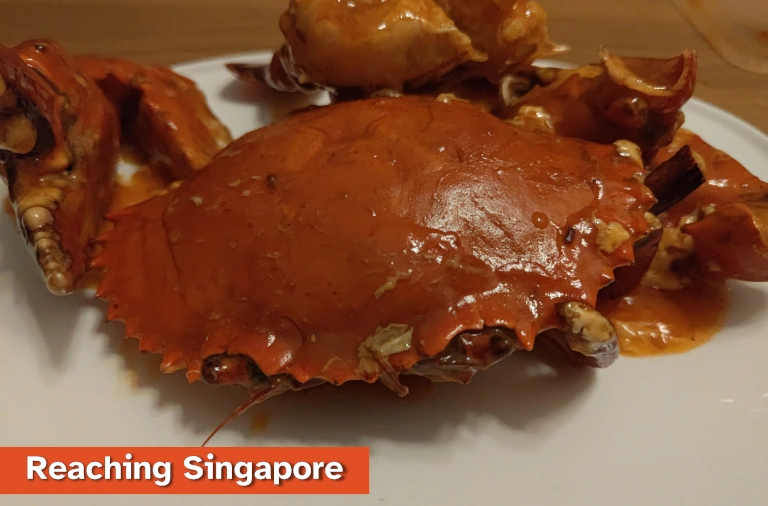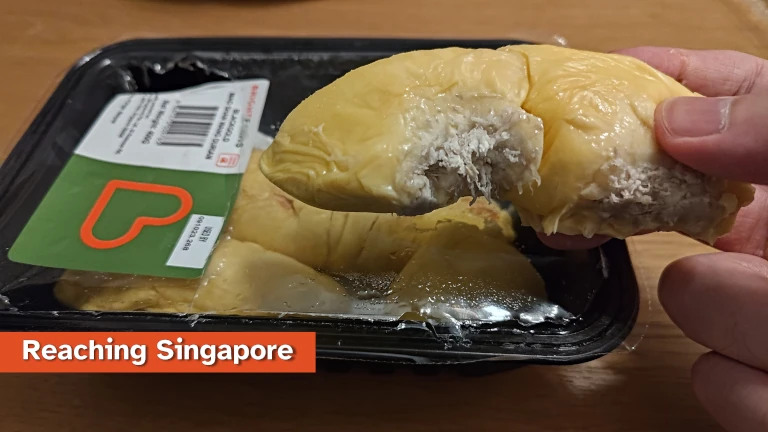8 things visitors should avoid in Singapore
Visitors often ask me what they should avoid when they come to Singapore. There are plenty of ways to waste money when you’re visiting a foreign country, and it’s good to have some insight into what is worth spending money on and what is better to avoid.
In this guide for visitors, I’ve listed out:
- Activities to avoid spending your money on
- Places to avoid at certain times
- Practices that you should avoid to have a good time in Singapore
1. Avoid white and black taxis
Taxis that are coloured black or white are premium taxis. This means that they charge a higher fare than regular taxis.
| Regular Taxi | Premium Taxi | |
|---|---|---|
| Flag down | S$3.90 - S$4.30 | S$4.10 - S$5.00 |
| Distance | 24-25 cents every 350m | 33-36 cents every 350m |
| Waiting time | 24-25 cents every 45sec | 33-36 cents every 45sec |
Premium taxis can also charge hourly hire rates that far exceed the equivalent distance based fare. This came to light in a recent news story where a premium hire car driver charged a group the hourly rate for a one-way journey that probably only took 20 minutes.
White or black taxis are usually the first in the queue. In Singapore, you’re supposed to take the first taxi in a queue UNLESS it is a white or black taxi, then you can take the next available regular taxi.
Airport taxi queue person will direct you to a white or black taxi, you can refuse and say that you want a regular taxi instead. You might have to wait a few more minutes for a regular one, but I feel this is worth it. The white or black taxi might make sense if you’re travelling as a family, they’re usually big enough to fit the whole family in.
2. Avoid the CBD on weekends
The downtown CBD area of Singapore is full of office buildings and hotels that are great for people visiting Singapore for work.
Nothing happens in the downtown CBD area on the weekends. The liveliness of the area that happens during the week disappears on the weekend with the office crowd - there are few people coming to the CBD on the weekend, and there are even fewer that live there. This makes it a bit of a dead area on the weekend.
One exception in my experience though is Lau Pa Sat (and a few other dinner restaurants, such as Cook & Brew at the Westin). Lau Pa Sat is still a great place to come and eat satay on the weekend. Bear in mind it is a dinner-focussed venue so don’t go there before 7pm.
3. Avoid ordering seafood skewers at Lau Pa Sat
Speaking of Lau Pa Sat, last time I went I was offered a set menu when I first sat down. This seemed really expensive, so I checked the ‘per stick’ price for the satay, and it was in-line with what I expected from around the city.
The ‘per stick’ price for the seafood skewers though seemed really expensive. We ordered one to try and it was really big, but at S$6 for a seafood skewer, I feel like this wasn’t worth it.
The price for regular skewers (chicken, mutton, or beef) was about what I’d expect compared to other satay spots (my personal favourite being at East Coast Lagoon). From memory, it was roughly 70 cents per skewer, but there is a minimum order of 15 or 20.
4. Avoid not checking the price of “market” seafood
Many restaurants in Singapore will list seafood dishes as costing a “market” price. When you order, they are supposed to tell you how much it is going to cost.

Sometimes it is not clear how much a “market price” seafood dish will cost in a Singapore restaurant. This was also highlighted by a news story recently where there was confusion over the order size and the diners ended up paying hundreds of dollars more than they were expecting.
Ask how much the total price for the dish is. Many restaurants will quote a unit price (such as per 100 grams), which is lower than the total price as you will be buying multiple units (e.g. a 1kg crab, but the price is quoted per 100 grams).
This practice is being discouraged however, and restaurant servers are being encouraged to disclose the entire price rather than the unit price. In my experience though, this doesn’t always happen.
5. Avoid tipping
There is no need to tip in Singapore.
At any establishment where service is offered, there will be a service charge added to your bill. Typically this includes cafes, restaurants, and bars - anywhere you can get free water and napkins. Unlike many other countries, it is not normal in Singapore for the credit card machine to ask you for a tip in a restaurant.
In taxis, it’s nice to round up to the nearest dollar or two dollars (as Singapore has a two dollar note) to reduce the amount of coins the driver has to give you.
If you’re interested in the full guide I wrote on tipping in Singapore, check it out here: reachingsingapore.com/tipping-in-singapore
6. Avoid trying to do too much in the heat
Singapore is hot and humid. Its tropical weather can be a shock to visitors coming from colder climates.
You will be easily exhausted if you’re not accustomed to the weather and start trying to do too much outside.
Thankfully I’ve found that it can be
- Plan to balance periods of activity with periods in the cool air conditioning - as you become accustomed to the heat, extend your periods of activity (e.g. start at 2 hours in the heat with a 30 min break, then extend to 4 hours)
- Wear loose breathable clothing
- Stay hydrated - drink water and/or electrolyte drinks (100 Plus Zero is my local favourite)
According to the US CDC, it takes about 5 days to acclimatise to the heat. If you’re interested in reading more about what they have to say on acclimatisation check out the further reading section I included at the bottom of this guide.
7. Avoid bringing durian into your hotel
Durian is the king of fruits. I love eating durian, it’s this creamy, sweet, complex-flavoured fruit that is very satisfying to eat; I don’t even mind the smell.
Durian can smell very bad to some people. I’ve heard people describe it as an open sewer pipe, smelly feet, or rotting onions. But to me, it smells (and tastes) lovely.

Do not bring durian into your hotel room though. The smell of durian can linger in a room, similar to the way cigarette smoke does. Hotels do not like this as it may be upsetting to the guest after you.
Hotels may charge a cleaning fee if you bring durian into your room.
8. Avoid breaking the law
This one seems obvious, but Singapore has some rules that aren’t always understood by visitors who come from other countries.
The rules I see visitors most at risk from include:
- Drugs - do not carry or consume any drugs in Singapore, they take this very seriously
- Graffiti - another one they take very seriously, do not vandalise anything. If you do happen to see graffiti in the city, it’s likely as planned street art rather than the result of vandalism
- Assault - as a visitor, do not get into a fight in Singapore, and do not assault (even in retaliation) a local
I find visitors are often caught unaware of how seriously Singapore takes the above rules, it’s safer to make sure that as a visitor, you’re not doing any of these.
The infamous chewing gum ban I often find is misunderstood by visitors as well. Originally the ban was instated because gum ended up stuck in the doors of the then newly built MRT train doors; this caused an extensive disruption to passengers and the government consequently introduced a ban. It also helped reduce littering in public areas (i.e. no more used gum stuck to objects). Technically the ban is only on import and sale, so it’s unlikely a visitor to Singapore will get in trouble unless you’re planning to sell it. Check out the Further Reading section for more information.
Thankfully the Singapore authorities take an ‘education first’ approach. If it truly is a rule that’s unique to Singapore, or that it can’t be expected that people from another country would know about it, police and other authorities would rather educate you first than fine or punish you. That said, you should be respectful throughout any interaction with them.
Further Reading
- Don’t avoid these FREE things to do in Singapore by checking out this guide I wrote on the best free things to do in Singapore for visitors: reachingsingapore.com/singapore-free-things-to-do
- I found this CDC guide on heat acclimatisation very helpful. It might not seem applicable at first, but the steps included can be used to help you become accustomed to Singapore’s heat and humidity.
- Full history of the chewing gum ban: Here.

